In this tutorial, you will learn how to insert data from Excel into PowerPoint without losing track. There are various methods to present your data, each with its own pros and cons. We will cover all options so you can choose the one that suits your needs. Whether you need a clean table or just a screenshot of your data, by the end of the tutorial you should be well equipped to effectively integrate your data into your presentations.
Key Findings
There are several methods to insert data from Excel into PowerPoint:
- Use destination formatting
- Adopt original formatting
- Insert Excel data as an embedded table
- Insert data as an image
- Insert data as text only
Now we will go through each of these methods step by step.
Step-by-Step Guide
To effectively transfer data from Excel to PowerPoint, simply follow the steps below.
First, open your Excel file containing the necessary data. Highlight the range you want to insert. You can do this by dragging the mouse over the desired cells. Once you have selected the range, you can copy the data to the clipboard by using the keyboard shortcut "Ctrl + C" or by right-clicking and selecting "Copy".
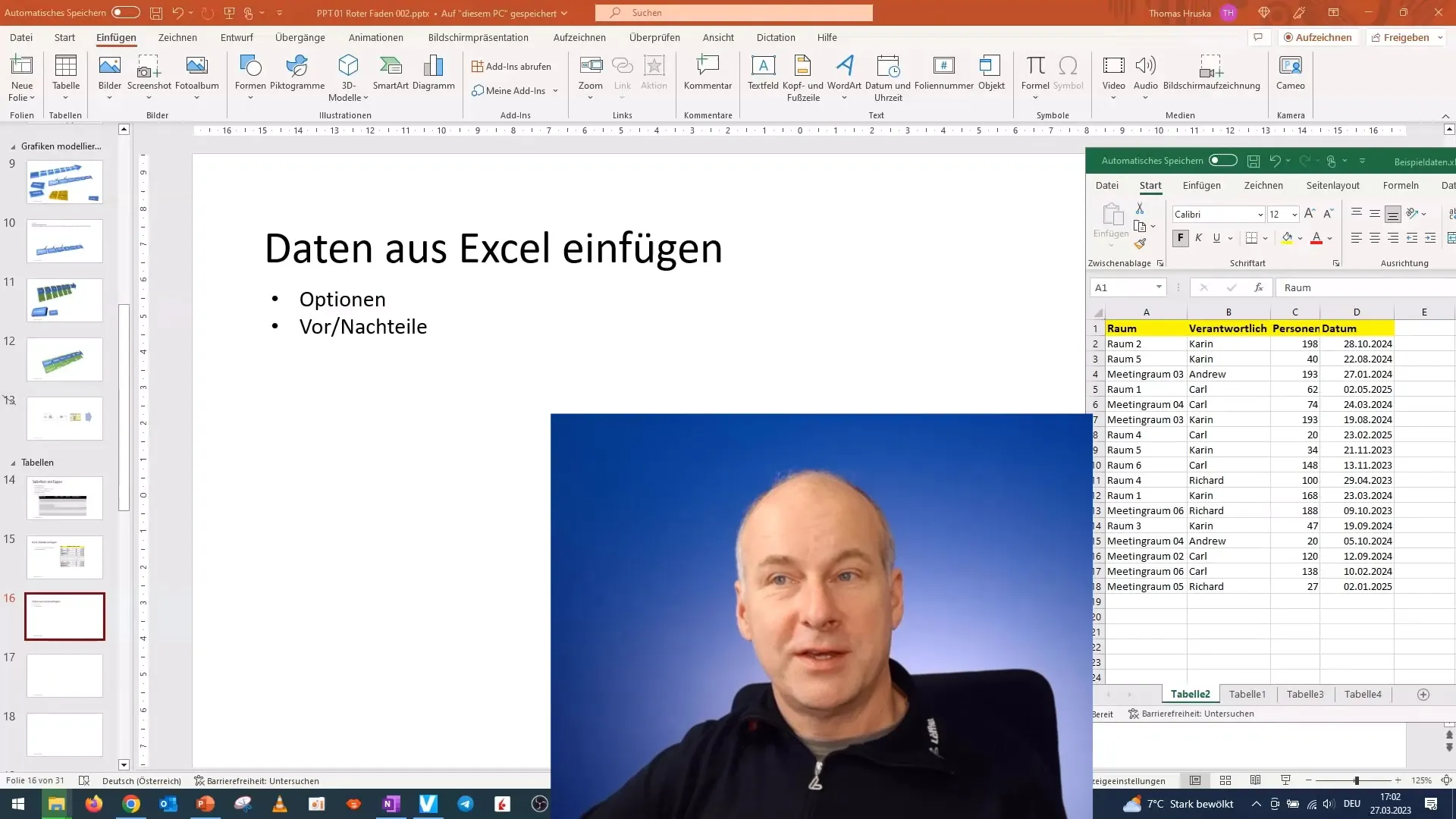
Once the data is in the clipboard, open your PowerPoint presentation and go to the slide where you want to insert the data. Right-click on the slide and view the various paste options. Here you will find multiple options, and I will now introduce the most important ones to you.
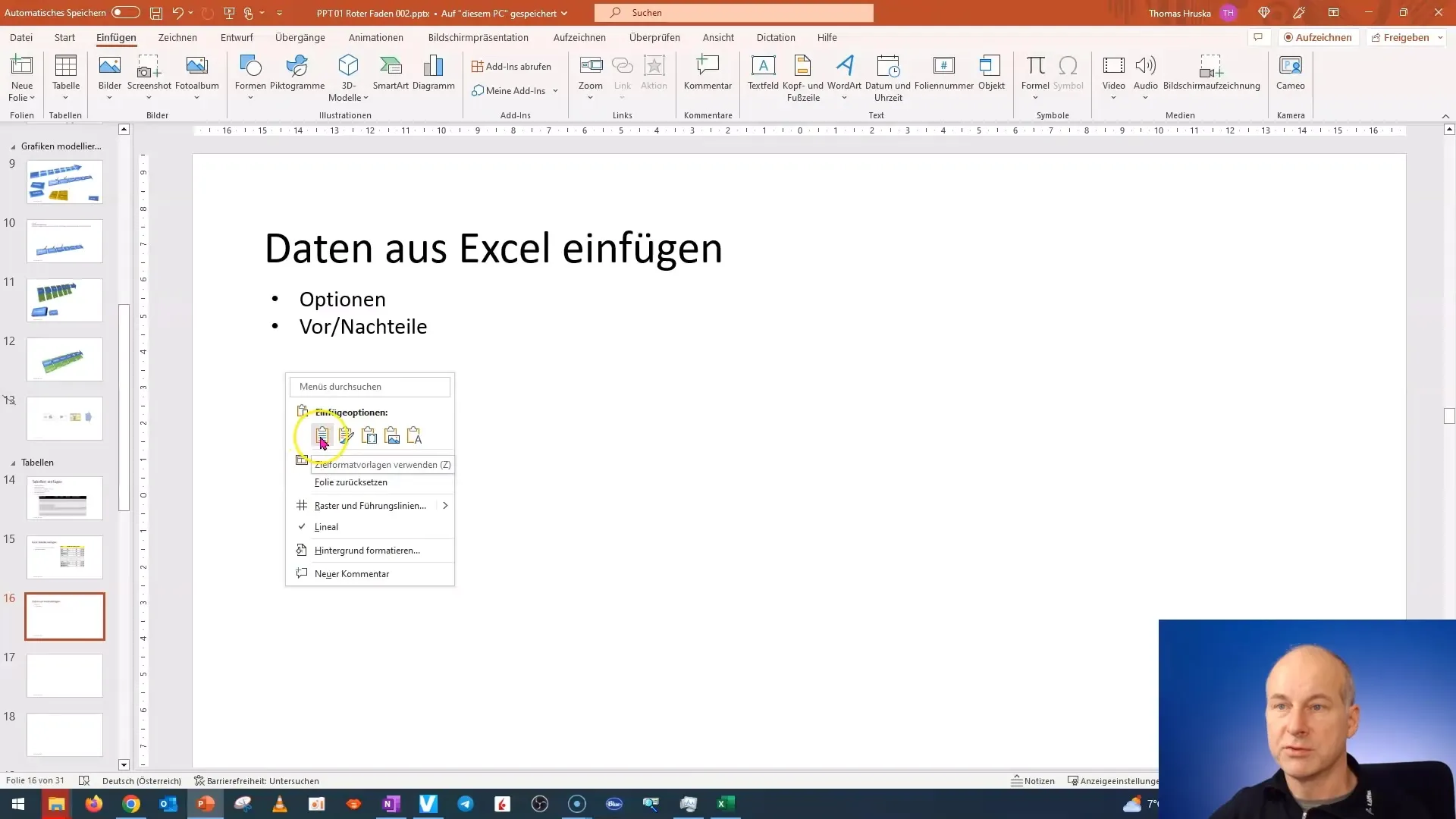
The first option is called "Use Destination Formatting". Selecting this function will insert the data in a way that adopts the design of your PowerPoint slide. This means colors and fonts automatically adjust to the slide layout, which can be a very elegant solution.
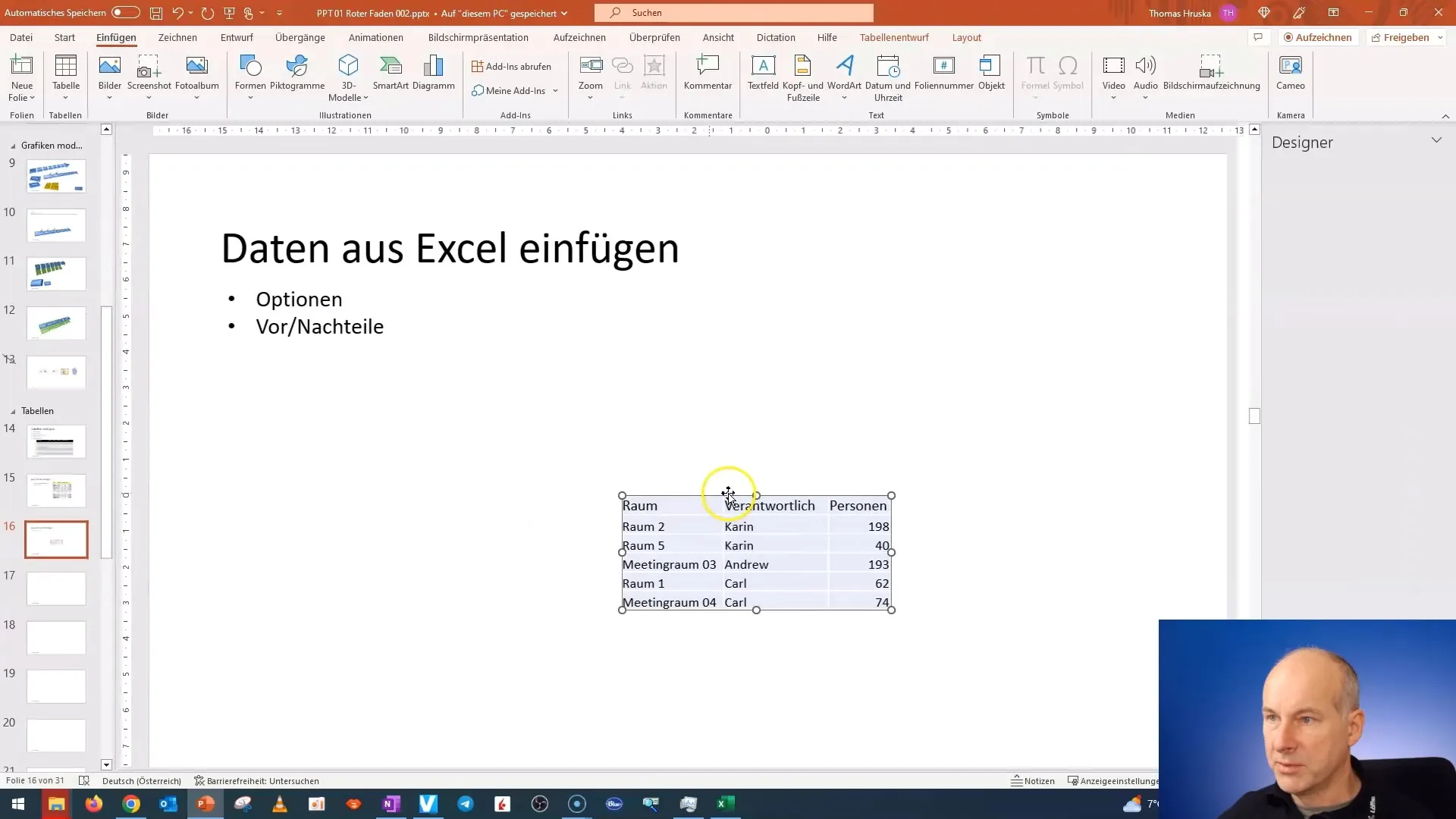
Another quick and easy way to paste is the "Keep Source Formatting" option. Here, the entire layout of your table, as it appears in Excel, is transferred to the PowerPoint slide. So you retain all aspects such as fonts and colors. However, note that this may not be ideal sometimes if your Excel document looks very different from your slide layout.
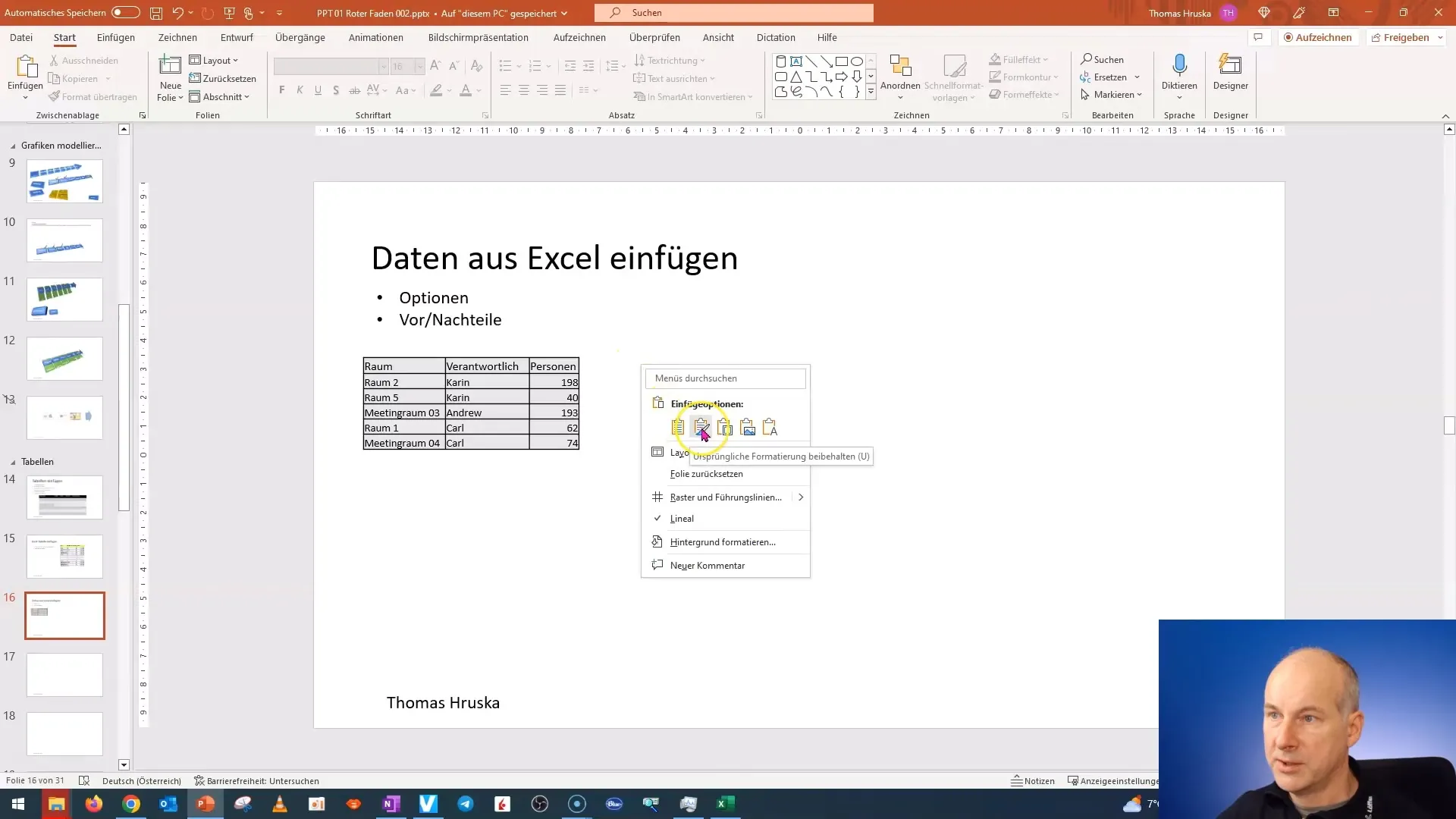
Another option is to insert the Excel data as an embedded table. This method allows you to edit the table directly in PowerPoint. If you anticipate needing to modify your data later, this is a smart choice as you can double-click to open Excel and make changes.
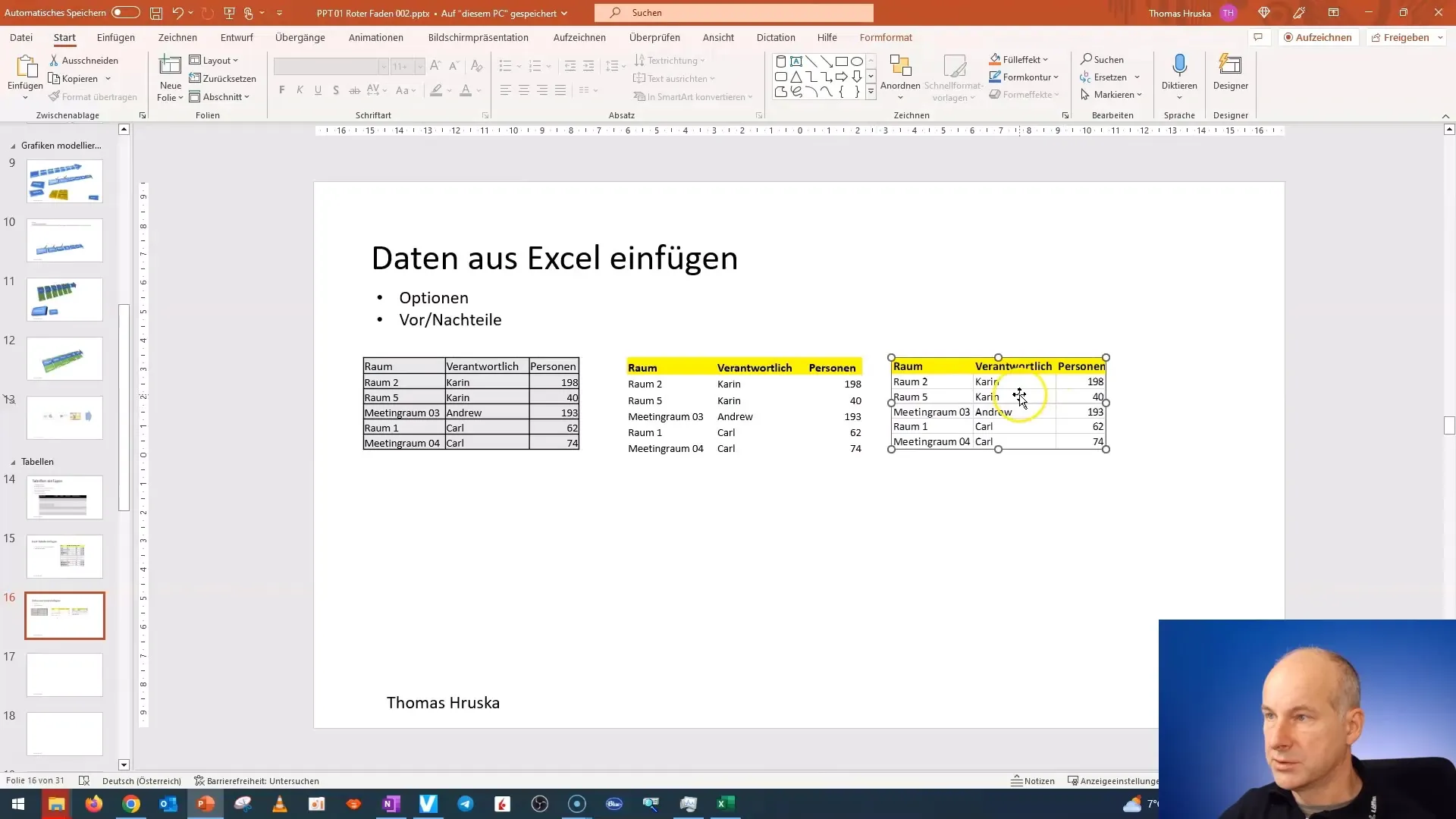
The next option is to insert the data as an image. This option is useful if you no longer want to edit the data but simply want to show how it looks. The inserted image will not be altered, giving you the assurance that the data will be represented exactly as you wish.
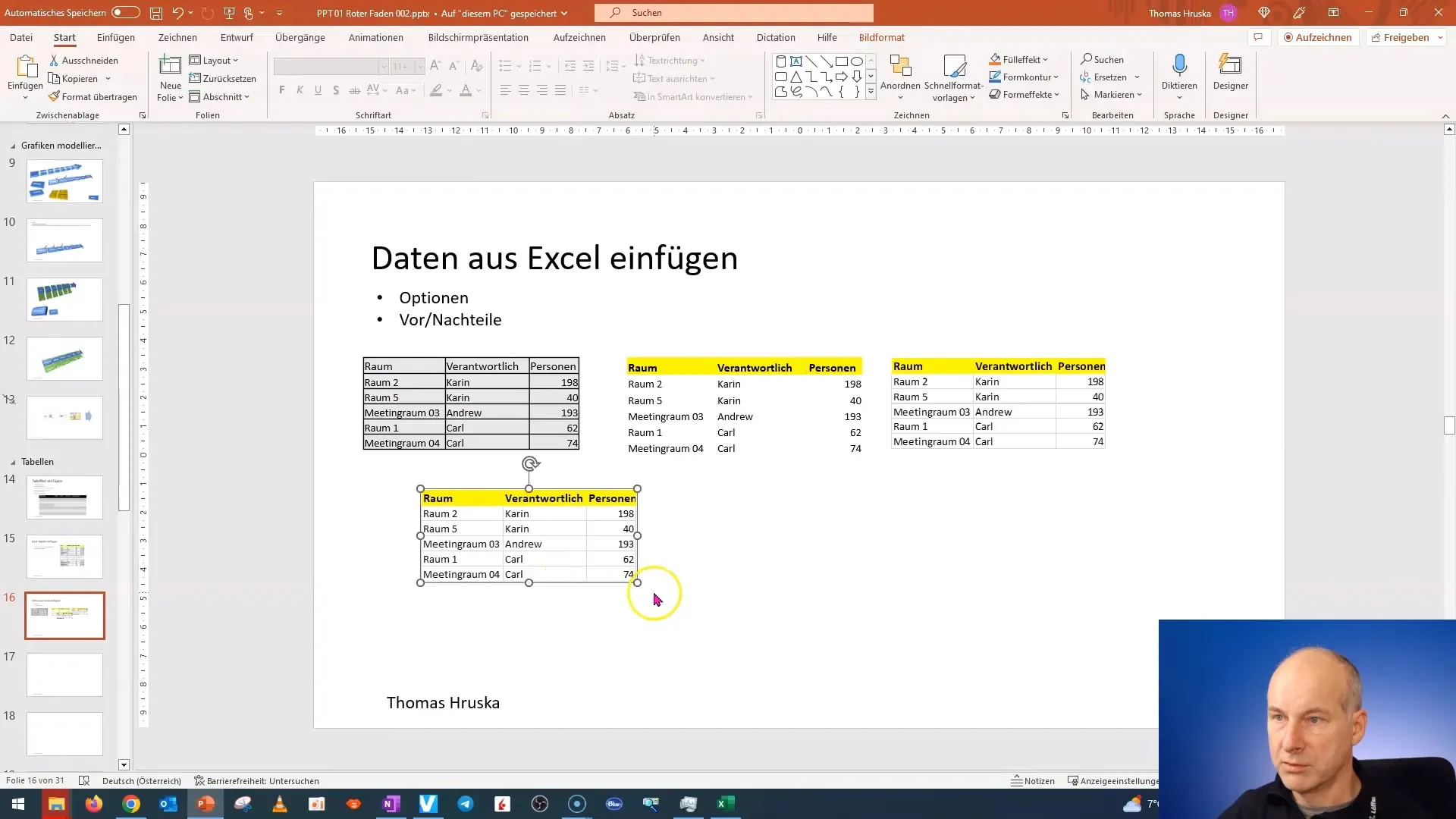
As a final option, you can simply insert the data as text. This option may not be as visually appealing as a table or image, but it has the advantage that you can fully edit the text without being bound to the original format.
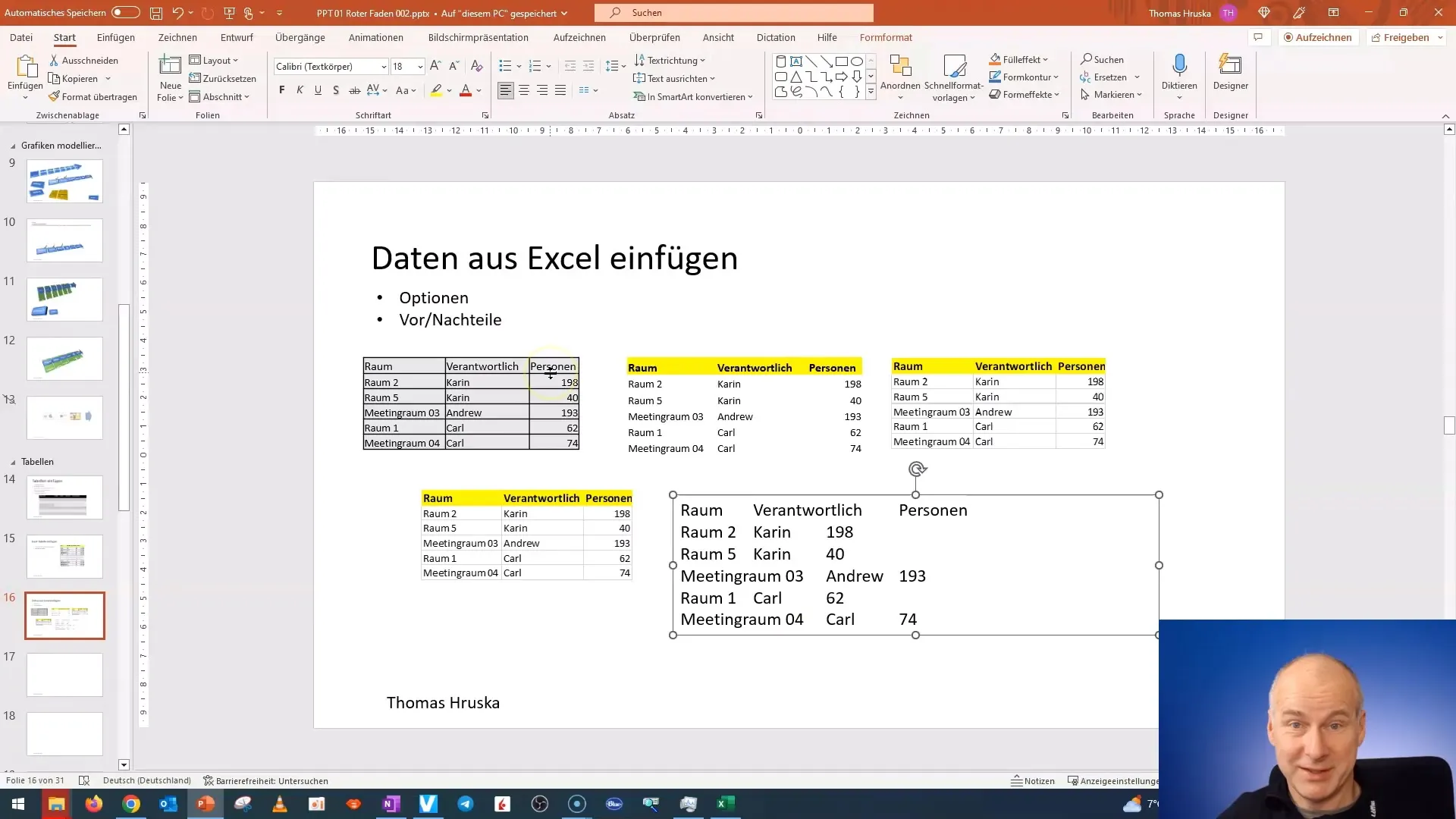
Now that you know all the main methods, which one should you choose? In fact, it depends on the specific situation. I most often use the "Inserted directly from Excel" option, especially when I want to present data in a clear, structured format.
Summary
In this tutorial, you were able to learn different methods to insert data from Excel into your PowerPoint presentations. Each method has its pros and cons, and the choice depends on your individual needs. Whether you prefer an elegantly formatted table, an image, or plain text, feel free to use the method that suits you best.
Frequently Asked Questions
How do I copy a range from Excel to PowerPoint?Select the desired range in Excel and use "Ctrl + C" or right-click and choose "Copy".
What does the destination formatting in PowerPoint do?The destination formatting adjusts the appearance of the inserted data to match the design of the PowerPoint slide.
Can I edit the tables in PowerPoint?Yes, if you insert the data as an embedded table, you can edit it directly in PowerPoint.
What is the advantage of inserting as an image?Inserting as an image preserves the appearance of the data and eliminates any editing options.
When should I use the text option?Use the text option when you desire flexibility in editing the content without being bound to the original format.


